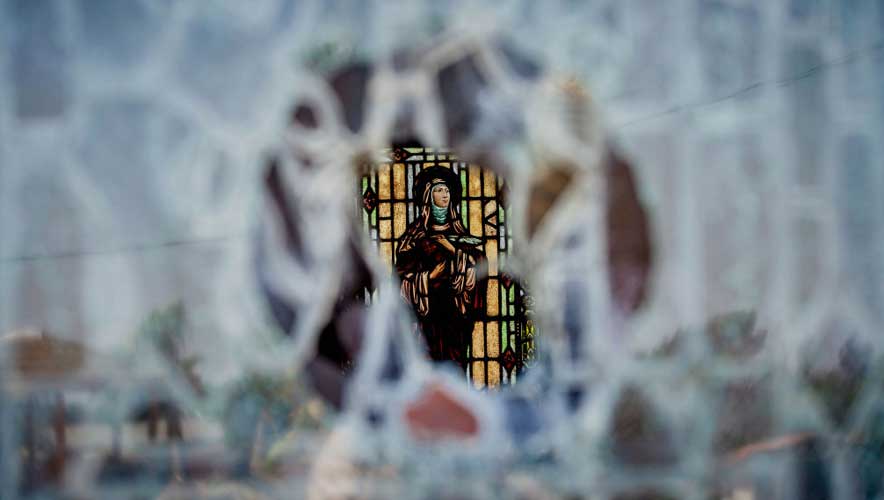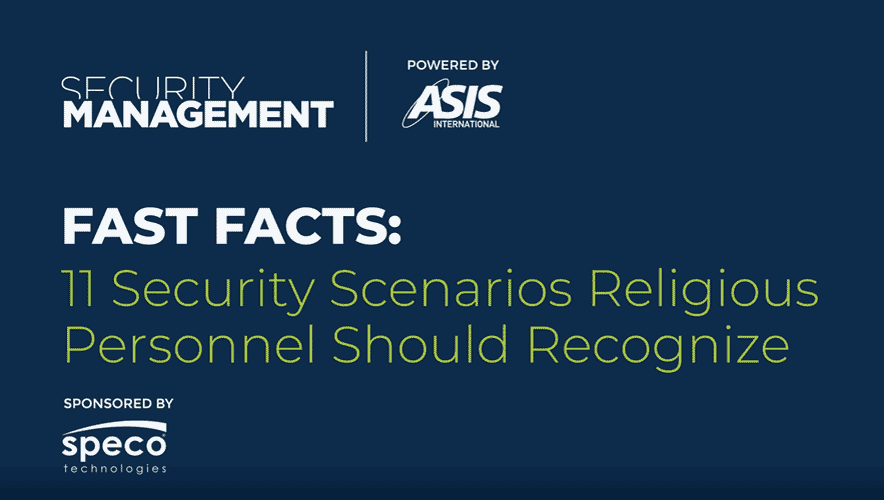5 Underlying Reasons for Extremist Attacks on Houses of Worship
Attacks against houses of worship have been on the rise in the past decade, even though they remain statistically rare. The U.S. Cybersecurity and Infrastructure Security Agency (CISA, part of the Department of Homeland Security) logged 37 incidents of targeted violence against faith-based organizations in the United States between 2009 and 2019, most of which were armed assaults. This marked an increase in the number of attacks from the previous decade, the agency noted, citing a spike in incidents of targeted violence in 2012 and a “discernable increase in the number of incidents between 2015 and 2019.”
In 2022, there were multiple high-profile security incidents and attacks worldwide at houses of worship. These incidents included two attacks on Christian churches in Nigeria last June, one of which left 40 worshippers dead; a mass shooting at a southern California Taiwanese church in May; and a hostage situation at a Colleyville, Texas, synagogue in January 2022.
SponsoredSpeco Technologies has the solutions to protect YOUR House of WorshipClick the link to enlighten yourself on how you can keep your House of Worship better defended with Speco Technologies |
But why do extremists and other attackers target houses of worship?
Firstly, because they are accessible. Faith-based facilities are often soft targets because they are designed to welcome in strangers and congregants alike. This culture, combined with large crowds of people during worship services or other activities, can make them a vulnerable and tempting target for potential mass attackers.
In January 2023, for example, a suicide bomber attacked a mosque in Peshawar, Pakistan, killing more than 100 people—mostly police officers—while they were off-guard at worship.
Second, targeting a religious institution can further ideological, political, or pathological goals. To complicate matters further, these motivations often overlap.
Ideology
Faith-based institutions are symbols—whether of a particular ideology, a set of values, historical ties, political ties, racial connections, or a culture. Extremists may target a house of worship or other religious organization in response to those symbols, viewing them as a physical representation of what they see as a wider enemy population, according to the Tony Blair Institute for Global Change. This could include a white supremacist attacking a synagogue due to his or her neo-Nazi beliefs.
Sixty-seven percent of targeted violence incidents against U.S. faith-based institutions between 2009 and 2019 were motivated by hatred of a particular religious, racial, or national identity, CISA reports. This notably differs from targeted or mass violence overall in the United States. A U.S. Secret Service study of five years of mass attack incidents found that half were sparked by personal or workplace disputes or grievances; only 18 percent of the attacks were strongly influenced by extreme or hate-based beliefs.
This was potentially the case in the May 2022 shooting at a Taiwanese church in Aliso Viejo, California, when David Chou, 68, allegedly opened fire to “execute in cold blood as many people in that room as possible,” Orange County District Attorney Todd Spitzer told members of the press. He said that Chou was motivated by hatred for Taiwan, and that he chose the church at random to make a statement.
Psychology
The U.S. Secret Service report, Mass Attacks on Public Spaces: 2016-2020, found that 14 percent of the attackers studied exhibited symptoms of psychosis, which played a role in their motivation to carry out a mass attack.
An emotionally disturbed man in Brooklyn, New York, was shot and killed by police in 2014 after he stabbed an Israeli student at an international Jewish organization building, CBS News reported. In another incident, the 2017 mass shooter at First Baptist Church in Sutherland Springs, Texas, had a history of engaging in domestic abuse, menacing women, and increasingly troubling behavior online and in person, the Associated Press reported.
This motivation often overlaps with other factors; analysts often argue that extremists have underlying or exacerbating psychological issues.
Politics or Social Climate
There is a strong association between the social climate in a country or region and threats to houses of worship.
“Historical analysis reveals that attacks on distinct ethnic and religious groups and individual houses of worship often accompany periods of intense racial and religious strife,” according to CISA’s 2020 security guide, Mitigating Attacks on Houses of Worship. “Some well-known examples include the bombing and burning of Black churches or the defacement and vandalism of synagogues and mosques during outbursts of anti-Semitism and anti-Muslim animus.”
The agency cautioned in 2020 that the United States appeared to have entered another period of social unrest. CISA cited “a simultaneous rise in bias-motivated attacks and hate crimes,” combined with social media providing a “fertile ground for hate speech and hateful ideologies to flourish” online.
Political changes can enhance these risks. For instance, the U.S. Supreme Court’s decision to overturn abortion rights in its 2022 Dobbs v. Jackson Women's Health Organization ruling triggered multiple incidents of vandalism, arson, and property damage at a variety of churches across the country. In January 2023, the FBI announced a $10,000 reward for information about a July vandalism incident at Georgia’s historic Ebenezer Baptist Church Heritage Sanctuary. A group of 10 individuals had allegedly spray-painted the message “If abortions aren’t safe, neither are you” on the side of the church, CNN reported.
Religion
Clashes between religions or denominations have occurred for millennia, and those conflicts continue today. This can also include sectarian disputes with political connections, such as power disputes between Sunni and Shia Muslims, or the persecution of the Rohingya religious minority in parts of South Asia, according to the World Economic Forum.
Terrorism
Terrorist attacks on religious institutions often overlap with political or ideological motivations. These attacks strike a particularly deep chord with people, making places that are typically viewed as sanctuaries feel unsafe. These attacks can also affect a broad swath of a nation’s population.
For example, CISA estimated that there are approximately 350,000 to 400,000 individual congregations in the United States, and 69 percent of people attend religious services at least once a year. In 2018, 84 percent of the world’s population identified with a religious group, The Guardian reported.
The tactic of targeting faith-based sites has been espoused by multinational terrorist organizations that seek to inspire violent extremism more broadly.
“Extremists also calculate that attacking a community at the heart of its religious identity can sow division and reinforce schisms,” according to the Tony Blair Institute for Global Change report. “Not only do successful attacks cement cohesion among an extremist group, but they can also foster hostility and fear throughout society. When al Qaeda in Iraq began large-scale sectarian assaults, it set in motion widespread violence that increased radicalization on all sides. Violence can encourage reprisals, and religious extremists try to exploit this along faith lines.”
Claire Meyer is managing editor for Security Management. Connect with her on LinkedIn or email her directly at [email protected].












